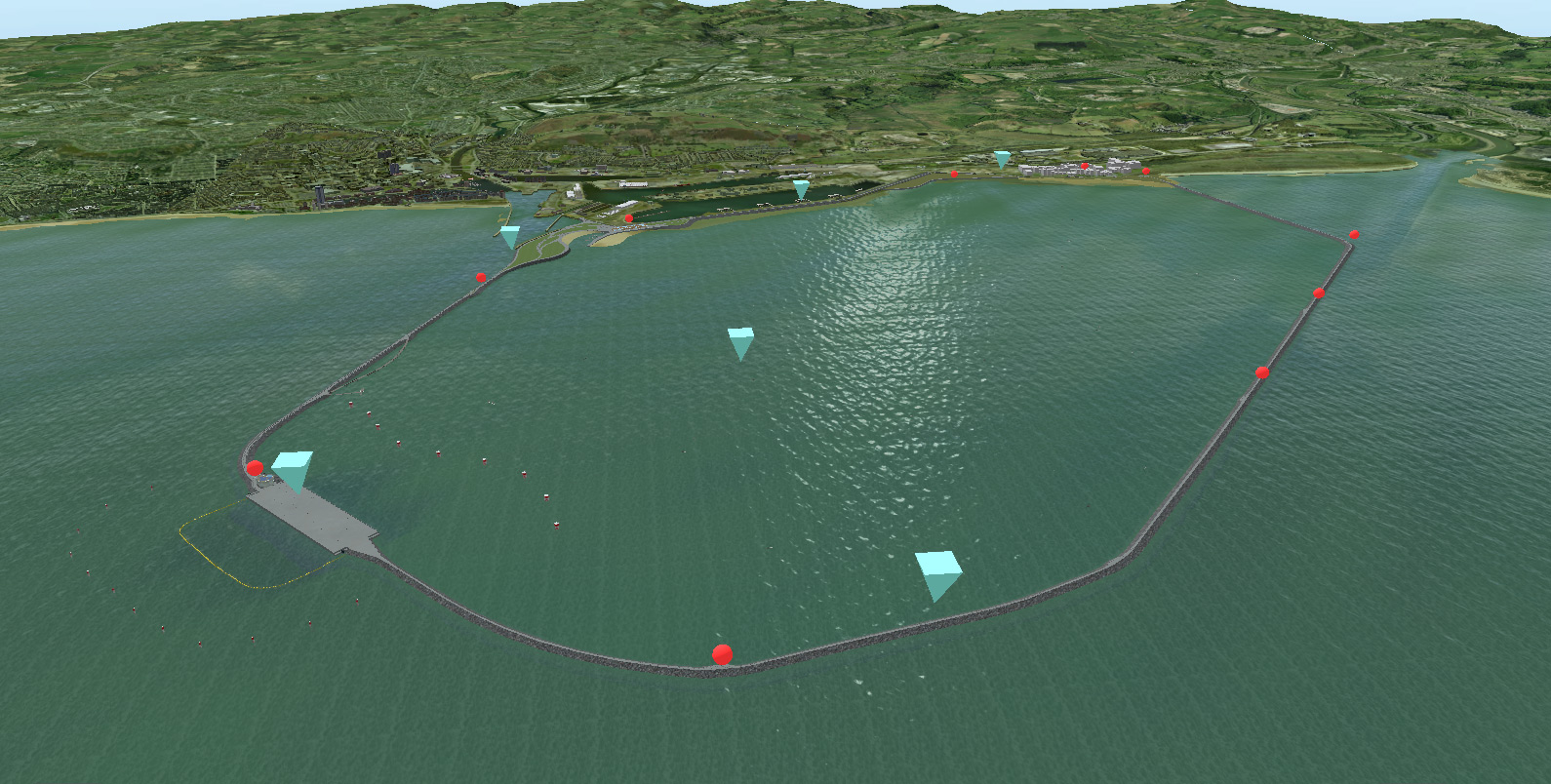Generating clean energy is a bit of a minefield. Nuclear is incredibly powerful but has some horrific dangers, solar power is still expensive and inefficient on a large scale and nobody wants a wind turbine in their back garden due to their size and noise. But what about wave power? Not only is it renewable and far from your average household, but it's entirely predictable too. That's the solution that energy secretary Ed Davey has, after he announced plans for the UK to build up to six man-made lagoons to generate clean, renewable energy.
The scheme, which will cost £12 billion in total could generate enough electricity to power eight per cent of British homes for as long as 120 years. While expensive, the return on investment is enormous considering that traditional fossil fuel power stations only tend to last around 30 years and nuclear stations a little longer at up to 40.

For those interested, Tidal Lagoon Power has an interactive 3D model you can fly around
The first stage of the multi-year project is currently set to begin in Swansea and would see a five mile sea wall built up to two miles out to sea. It would essentially allow power companies to damn the sea temporarily, only releasing water through when levels were of different heights, thereby creating a current between the two which would drive underwater turbines, creating electricity. It's also been suggested that the artificial lagoons would be perfect for water sports and tourism.
If the Sweansea scheme worked out, it would lead to the creation of several more sea walls along the coastlines of Cardiff, Cumbia and Somerset, as well as three more sites in Wales. However, this may never come to pass as fisherman believe that the artificial lagoons would impede fish migration and would damage populations as they are sucked into turbines.
The company responsible for the project, Tidal Lagoon Power, said however that this would only happen in small numbers and that in reality, the wall's construction could create an underwater reef habitat on British shores. It did however admit that the early development aspects of the project will be expensive, which may not please tax payers. CEO Mark Shorrock however, did state that it will get a lot cheaper in the future thanks to improved engineering experience and added interest in the project.
Discuss on our Facebook page, HERE.
KitGuru Says: What do you guys think of the idea for a large sea-wall created around specific parts of the British coast? 120 years is a pretty impressive outlook. [Thanks BBC]
 KitGuru KitGuru.net – Tech News | Hardware News | Hardware Reviews | IOS | Mobile | Gaming | Graphics Cards
KitGuru KitGuru.net – Tech News | Hardware News | Hardware Reviews | IOS | Mobile | Gaming | Graphics Cards



While I see what the fishermen are saying about the migrations etc, how would this be any different from the sea walls and harbour walls that keep their ships safe during rough seas?
I’m all for this if the pilot scheme is a success. We simply need to break our relience on fossil fuels.
‘power companies to damn the sea temporarily’…. Surely you mean dam, not damn?
Sea and harbour walls do not suck in and mash sealife.
While true, I don’t think the impact will be large. I have my doubts that it’s going to suck in whole shoals of fish. On top of that, all it would take is some meshing or a net a sufficiant distance away that would mean the currents wouldn’t be strong enough to suck the fish in.
It’s the same arguement that wind turbines could harm bird populations.
Ancient Hawaiians made something very similar as fishponds to greatly increase fish habitat and ease of harvesting said fish. While in use the Hawaiian waters were one of the most productive on the planet. Then with the introduction of Western thought almost all the coastal fish ponds were destroyed and dismantled reducing Hawaii to be completely dependent on imported food. It is Ironic to think that a design Hawaiians had developed 100’s of years ago would be making a comeback in the modern era in a western world that thought that they were a backwards people.
If you designed them horribly, yes it could conceivably do as you say. But please look up Hawaiian fishponds and understand that these could be a huge benefit to wildlife habitat. The generators do NOT need to be designed in a way to mash wildlife. Far from it, they would be an easily managed barrier to provide a safe spawning area for fish in the pond while allowing an exchange of nutrients between the ocean and the pond, without the huge toxic buildup of farmed fish that usually takes place. If you think the moving of the tides would have to suck in and mash fish up you have a horrible understanding of natural coastal fish spawning areas.